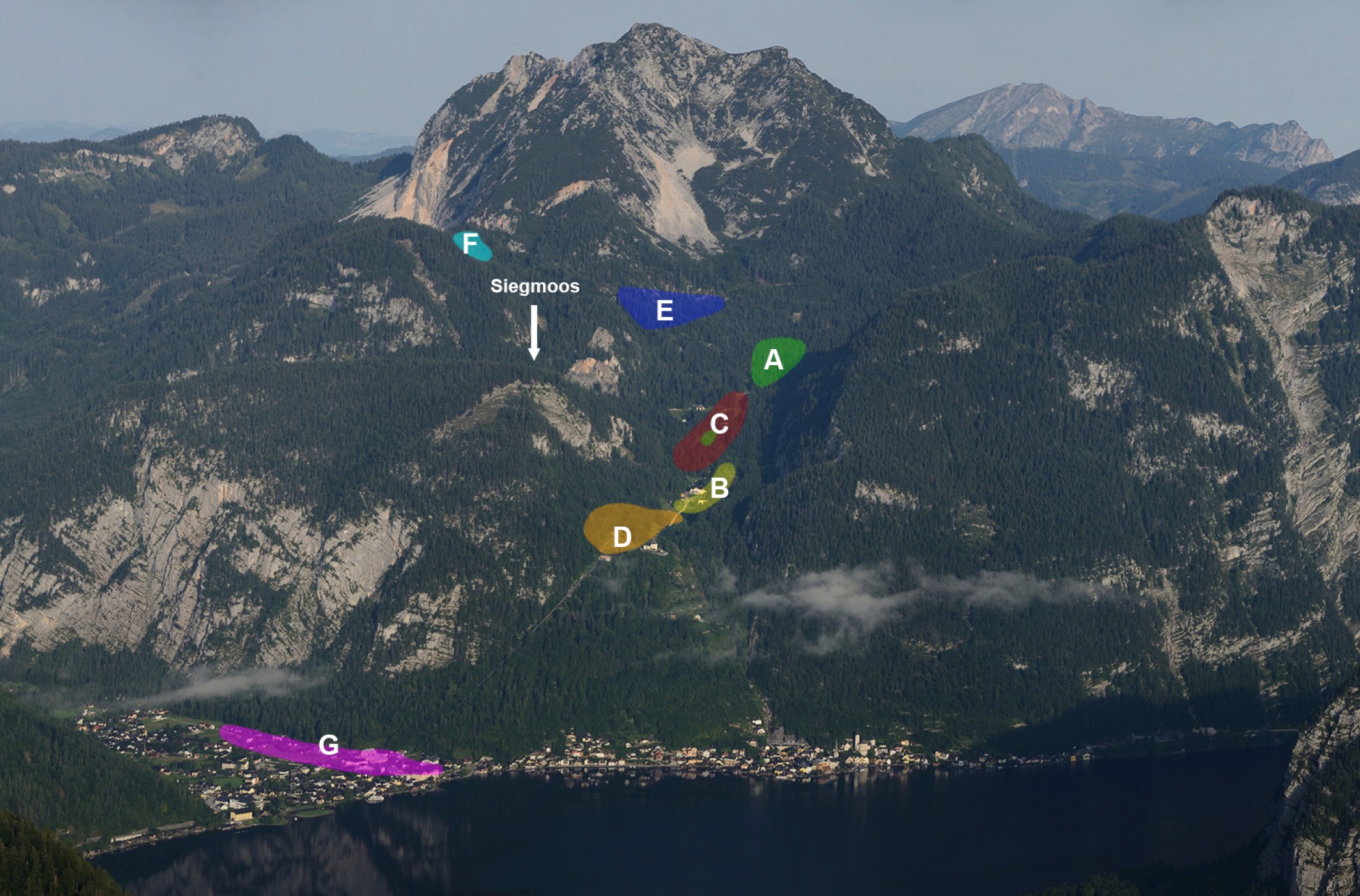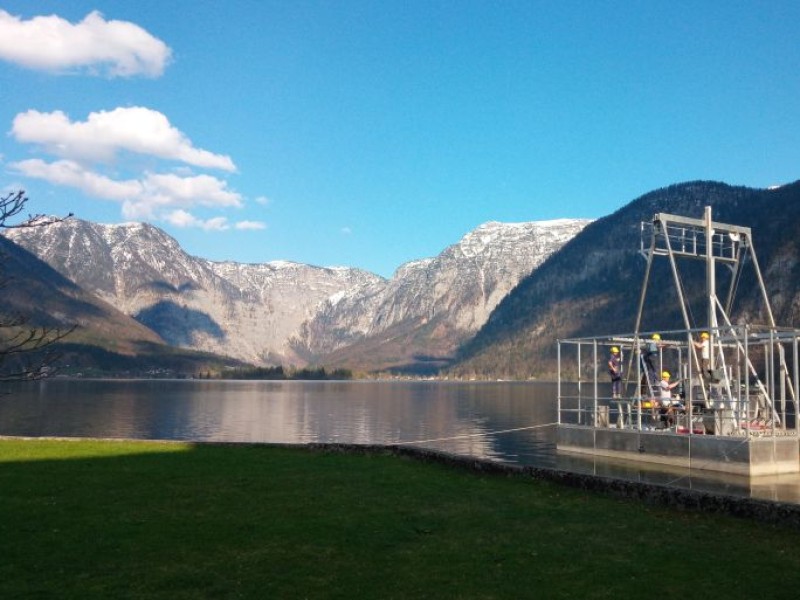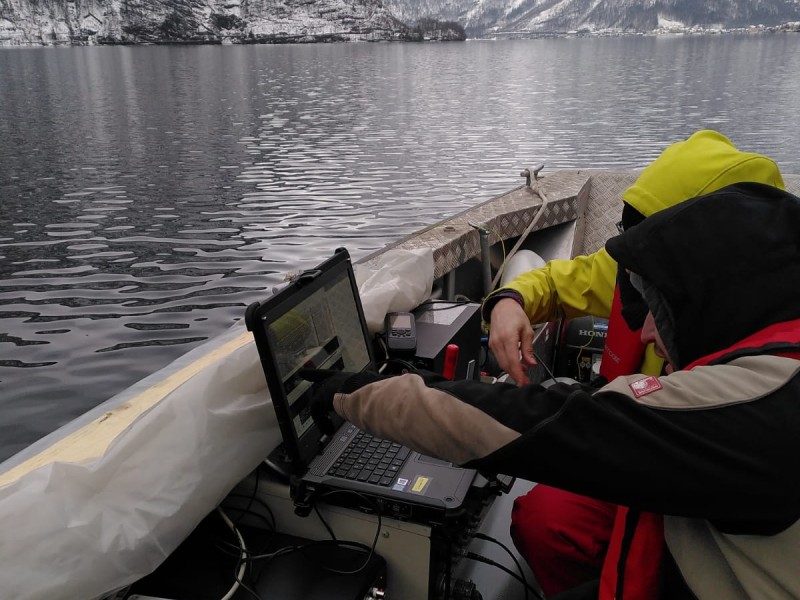Hipercorig-Hallstatt-History (H3)
A deep insight into the past of Lake Hallstatt
The H3-Project deploys a newly developed drilling platform on Lake Hallstatt. The researchers are interested in uncovering the climate and environmental history of the Inner Salzkammergut over the last 10,000 to 12,000 years. To do this, sediment cores of at least 40 meters in length must be taken from a water depth of over 100 meters. This drilling depth was previously unattainable, but can now even be exceeded with the new drilling rig from the Uwitec company.
Prehistoric mining
The oldest finds from the Hallstatt mine and its surroundings are 7000 years old. They thus provide evidence of very early
salt mining. How salt mining developed from these first beginnings in the Stone Age to Bronze Age mining (proven from 1300
BC) cannot be said at present. However, investigations in a bog (Siegmoos) above the Salzberg valley show that there was a
constant human presence from 4300 BC until today (Festi et al. 2021; Knierzinger et al. 2021).
Bronze Age mining was interrupted by a landslide around 1061 BC (Grabner et al. 2021). Subsequent mining reached gigantic
dimensions, creating mining chambers 300 meters long and up to 20 meters high (Barth & Reschreiter 2019). This operation was
also buried around 662 BC (Grabner et al. 2021). The restart of salt production took place immediately afterwards. Further
landslides followed. However, the Hallstatt communities and their networks were so stable that a reconstruction of the infrastructure
and a new start in mining was possible each time - until today.




